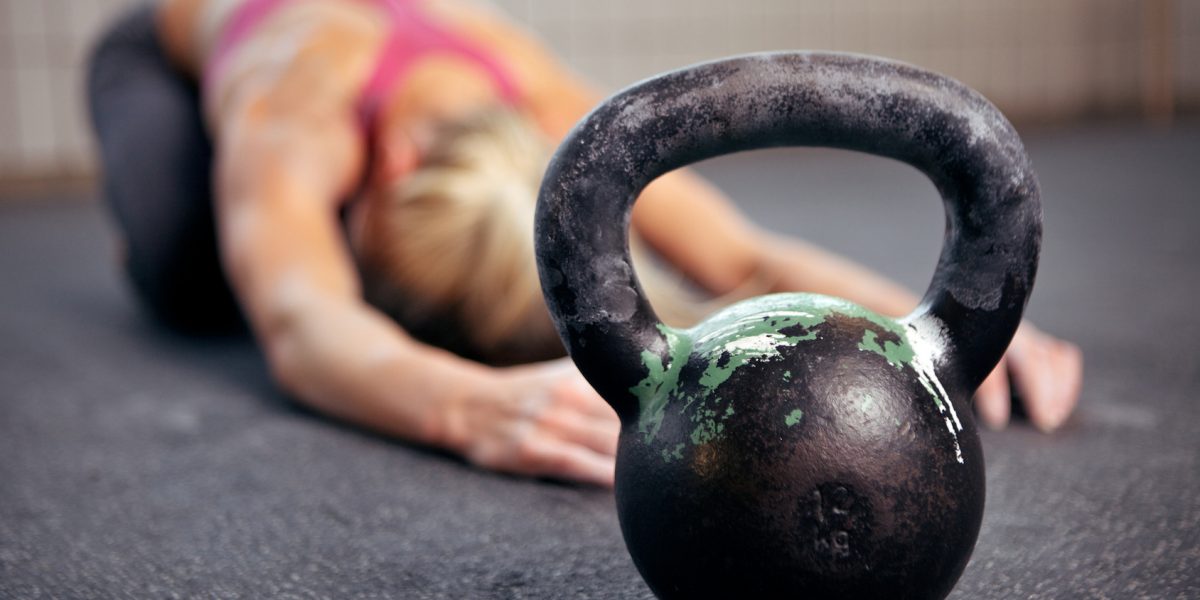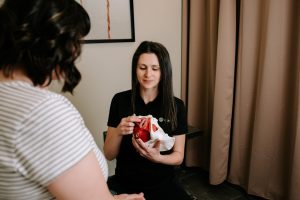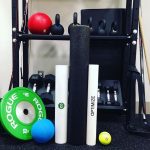Sorry for the missed week, site maintenance stopped us from being able to upload an article. Back in action now and have a powerful article written up for this week, hope you enjoy.
A major key to keeping a healthy body as we age is a resistance training practice. As we get older 2 things happen: we get stiff and we get weak. Building muscle mass builds a coat of armor around joints and allows us to maintain an efficient body no matter what number your age says – strength and mobility will literally prevent your body from breaking down. The human body is designed to last 100 years disease free and the idea of osteoarthritis and body breakdown being a normal process of getting older isn’t the case if we work on and maintain our human machine. This article aims to give a basic template on which to begin a strength training practice in your own home and with equipment that costs less than 3 months membership at a gym.

Because who doesn’t like cat picture memes
Many people find it daunting to start going to the gym and push around weights. Not knowing proper form, what exercises to do, what weight to do, being around grunting meatheads or not having enough time in the day to work out are some common excuses I hear. What if for $200 you could create your own home gym and workout 3 times a week for less time than it would take you to drive to and from a gym? Now that would be efficient and its really not that complex.
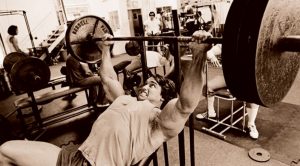
Here’s all you need: A few kettlebells and the human maintenance toolkit which consists of a foam roll, a softball and a lacrosse ball. Just like a mechanic requires a good set of wrenches and carpenter a good hammer, every single human should have the human maintenance toolkit and know how to use each piece appropriately to work on their body. You can literally re-shape your body, improve your physique, practice proper movement patterns, eliminate pain and make yourself into a resilient machine immune to injury while becoming functionally stronger than most that workout at the gym.

An effective home gym
The Tool
The kettlebell is essentially a cannonball with a handle, typically made of cast iron. The simplicity is beautiful and it’s an indispensible piece of equipment in both my personal strength training and in my physiotherapy practice for rehab exercises and strengthening with patients. That same primal simplicity also makes it an incredibly versatile tool that can be used for most body parts. Shoulder, back, lower body – it does everything, and I don’t know of any other single tool that I use or recommend more.
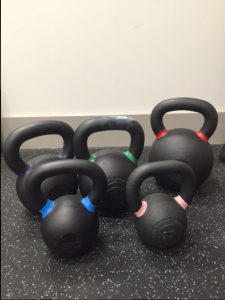
A balanced physical practice that everyone should adopt for optimal function and healthy aging contains several components: 1) strengthening 2) mobility and maintenance 3) heart rate 4) good diet.
Step 1 is to buy in and understand the value of having a consistent physical practice. Step 2: see a competent physiotherapist for a movement and mobility assessment to ensure you have the required joint mobility and movement patterns to start strength training without risking injury. Purchase the human maintenance toolkit and you will be taught how to use the tools by the therapist. Step 3: See your physiotherapist for a follow up appointment to be introduced to basic strengthening movements and discuss the appropriate kettlebell weights to get started with. Step 4: purchase a few kettlebells and get to work with a consistent weekly routine.
A few essentials for your home workout routine:
- At least 1 shoulder press variation. Upper body strengthening has many tremendous benefits – a kettlebell press done with proper form will ensure you have and are strong through full human range of motion at the shoulder joint. Upper body strengthening is especially crucial for females as they age to maintain shoulder girdle and upper extremity bone density. Having a functionally strong upper body also makes you more resilient to injury (bye bye rotator cuff tears) and makes your day to day life easier – next time you need to help carry a couch or some heavy groceries it seems like a breeze instead of a risky and taxing activity.
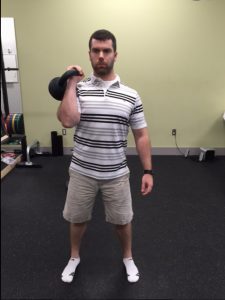
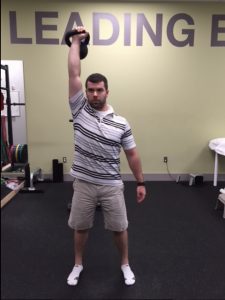
Kettlebell front rack press
- At least 1 movement that incorporates a hip hinge. The hinge is a fundamental movement that every human should be able to do properly and include into a regular movement practice. The hinge basically involves bending forward at the hip joint while keeping a neutral and rigid spine. The variations are endless – goat bag swings, kettlebell swings, deadlifts, the list goes on. Some are more basic than others and before you start using a weight you need to dial in the basic movement pattern with your physical therapist as part of your movement screen.
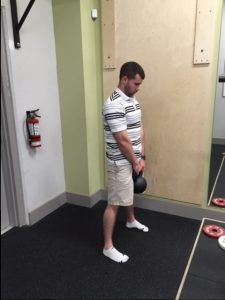
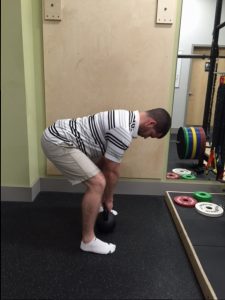
Kettlebell deadlift
- The squat is another beautiful and basic movement that not enough people do on a regular basis. The human body is built to squat and most people on this planet still use the squat as a basic position to eat meals, to toilet and as a comfortable resting position. In North America, chairs have destroyed the ability of many to do a proper squat so don’t be surprised if it takes some work before you start loading up the squat with weight. Master the bodyweight squat first with the help of your physical therapist and once you have perfected it you’ve earned the right to start loading it up. Goblet squats with a kettlebell (pictured here) are a tremendous way to use a kettlebell to help with your form and provide extra resistance to build muscle mass and strength.


Kettlebell goblet squat
- Loaded carries (aka farmers walk). Holding a weight (either by your side or above shoulder level) and walking a distance is an extremely underrated and powerful tool to include in your strength training practice. It ingrains functional pillar strength, activates the rotator cuff of the shoulder and for some can be the most beneficial element in a workout program. Its also the biggest missing element in most strength training routines.
Those 4 core exercises create an effective platform to build on and can be done in less than 30 minutes. As your skill, strength, and mobility increase with the kettlebell, there are other variations in the way you hold the weight that can significantly increase the difficulty of exercises before having to increase the weight of the kettlebell used.
The elements of this effective home gym are inexpensive, require little space to store (about 2 square feet), don’t require much space to use (a small space in your living room or basement is plenty), the sessions can be done 3x per week for 30min and give significant results so there’s really no excuse. The best time to start a strength training routine and move toward better health is right now. The sooner you start the better your body will feel and you are guaranteed to spend less time in medical and physiotherapy clinics with injuries.
For the price of about 5 months gym membership, you can see a physical therapist for 3 visits, get two kettlebells and the human maintenance toolkit to begin your journey to a healthier body and optimal health both physically and mentally. Strength training doesn’t have to be daunting. Starting is the hardest part but with good advice and some help with getting started, I promise you that beginning a basic and consistent program will be the most rewarding and valuable experience towards healthy aging and increased overall quality of life.
If you need help getting started, our therapists at optimize can help you prepare for starting a strength training routine by working on restoring full mobility and proper movement patterns, teaching basic resisted movements with kettlebells, and provide you with everything needed to start – including the kettlebells.
Give the idea of having a home gym a second thought and re-frame what a home gym means to you.
In summary:
-Strength training is a powerful tool to promote healthy aging and prevent injuries
-Having an effective home gym can cost you less than a few months gym membership and a training routine done 3 times a week for 30 minutes can yield powerful results in transforming your body
-The essential fundamentals of any training program require an overhead press, a hinge, a squat and loaded carries.
-Having a conversation with a competent physical therapist about your mobility and movement patterns first and then about using kettlebells appropriately will ensure that your journey to better health is done properly and without risking injury
I home this reframes your current meaning of a home gym and strength training routine to something much less daunting and gives you the motivation to start working on your body to prevent injury and optimize your quality of life instead of waiting for pain and injury to come around and be forced to deal with it.
Cheers,
Nick
